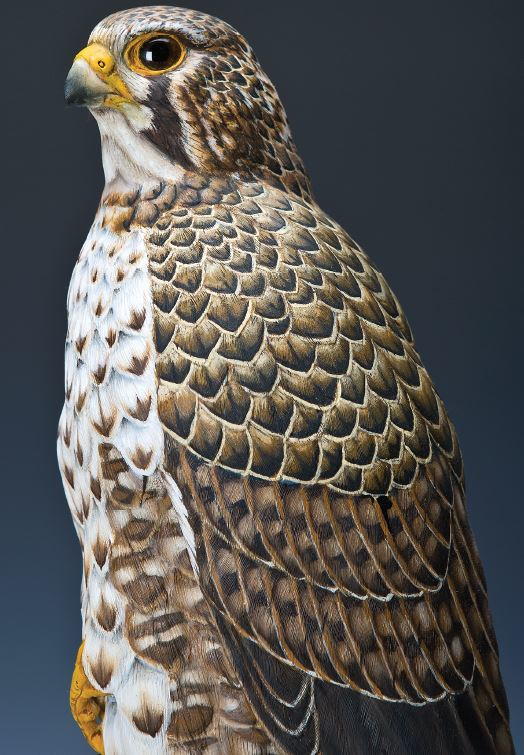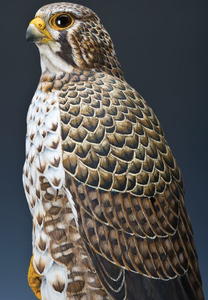Prairie Falcon, Part Two: Painting
Apply the paint, and make this raptor come alive.

After I photographed the falcon for the first part of this demonstration (Spring 2011) and had a chance to live with the bird a little bit, I decided to repaint the face and the chest. My original attempt wasn't exactly what I wanted. I had just finished another bird with similar markings and refined a new technique that I was working on—one that I decided would work much better with this falcon. Before starting over, I coated over these areas with titanium white thinned down with the painting medium until it was about the consistency of milk.
I generally do not seal a bird before painting because the thin washes of oils generally do the job. On the light areas, I do apply a few thin coats of titanium white mixed with Schultz's painting medium. This tends to brighten those areas nicely.
I use a number of different brands of oils because no single company carries all the colors I need. I mix Schultz painting medium with the paints because it provides a good flow and speeds the drying time without destroying the colors' integrity. The brushes that I used for this bird were Richeson sable #6 for blending, Richeson sable #2. For fine detailing, I use a Richeson sable #0.
Before I begin painting, I will decide which particular phase, morph, or hue I prefer. This is one reason I love the birds of prey, for they offer so many variations. After I find the pictures of the birds that I wish to represent, I crop and resize the images to highlight the particular areas that I will paint.
This article is from the Summer 2011 issue. For more information on our issues, check out our issues page.
Read NextNorthern Cardinal, Part Two



